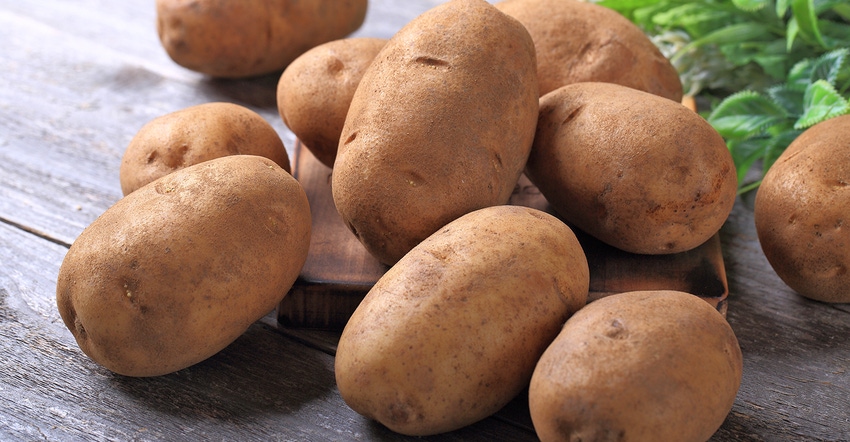December 24, 2018

During the technical presentations at the Irrigation Show in Long Beach, Calif., in November, there was a range of papers and talks delivered. One presentation that stood out was pitched as a talk about creation and adoption of irrigation innovations. And the payoff was that using some new tools combined with tighter management can yield significant results.
Clinton Shock, an Oregon State University professor and superintendent of the Malheur Experiment Station, shared some of his results. Shock has been working on precision irrigation and nutrient management to specialty crops, including onions and potatoes. During the November event, he offered his insight on getting farmers to adopt new practices that could boost quality and productivity. His model crop for the presentation was potatoes.
He shared that a key to getting growers to adopt innovations was looking at four areas — the comparative advantage of the technology; compatibility with other practices on the farm; observability of benefits for the technology; and finally, learning about the tech from someone they trust.
“We’ve had a great time working on innovations,” Shock said. “In the West, irrigation is important because you get little precipitation during the season. Most of the rain falls in the wintertime, and it just doesn’t meet crop needs at all.”
He noted that gravity irrigation has been popular. In the last 30 years, however, there has been more adoption of sprinkler, drip and other tools including irrigation scheduling. “When you’re running an experiment station you do hundreds of experiments; but what’s going to be an advantage for growers, and what will carry the industry forward?” he asked.
An interesting potato experiment
For many farmers, sensors, monitors and new forms of irrigation are a significant investment — but is there a payback? Shock took a look at one project that fits into his four-themed idea of being accessible and useful for an operation.
He took a look in large-field potato plots at three drip scheduling strategies based on evapotranspiration, saltwater tension and soil surface tension. Using different sensors in the process, he found similar results in the plots. The key was using sensors to manage water use, and to manage nutrient application with soil solution tests.
“We put on 100 pounds of nitrogen at planting, and the rest was applied as needed through fertigation,” he explained. “Our aim was to match the crops requirement and not go over that during the season.”
There are two areas of production evaluation for potatoes — yield and quality. Farmers want productivity, but they get paid best for smooth, marketable potatoes. This was a project aiming at the fresh market. The challenge is that using conventional methods, farmers never get more than 80% of those smooth potatoes from total yield. The key was to get productivity of high-quality potatoes.
To get that productivity, farmers often use 300 pounds of nitrogen per acre in season. What Shock found was that his plots could achieve higher yields on much less nitrogen. In fact, he never exceeded 125 pounds of N in his trials.
“We were not excited about applying N when the petioles were marginal,” he recalled. “The soil was telling us the potential.”
Add in tighter irrigation management, and Shock believes his watering didn’t push the N below the crop into the soil profile. Instead, the plant always had access to adequate nitrogen. And the results surprised even Shock.
Powerful results
“We have been struggling to do things just right for a long time, and when we dug these potatoes [in this trial], we had never seen a crop like this,” he said. “Partially, this was due to breeding development, but our percent of smooth potatoes was ridiculously high.”
In the trial, the average percentage of U.S. No. 1 potatoes averaged 98.6% for Payette Russet varieties; for Clearwater Russets, the average was 96.9%. That beats even the average high of 80%.
“We’re showing a comparative advantage for growers,” he noted. “Using the right tactics for adoption boosted yield and final crop quality for the market.”
Better matching of water and nutrient needs for plants showed a significant potential for payback in this experiment.
As Shock noted: “These examples offer a comparative advantage for growers. If you’re using center-pivot irrigation, you need to change the timing and frequency, and not drive the nutrients through the [soil] profile. The consequences are observable.”
About the Author(s)
You May Also Like






